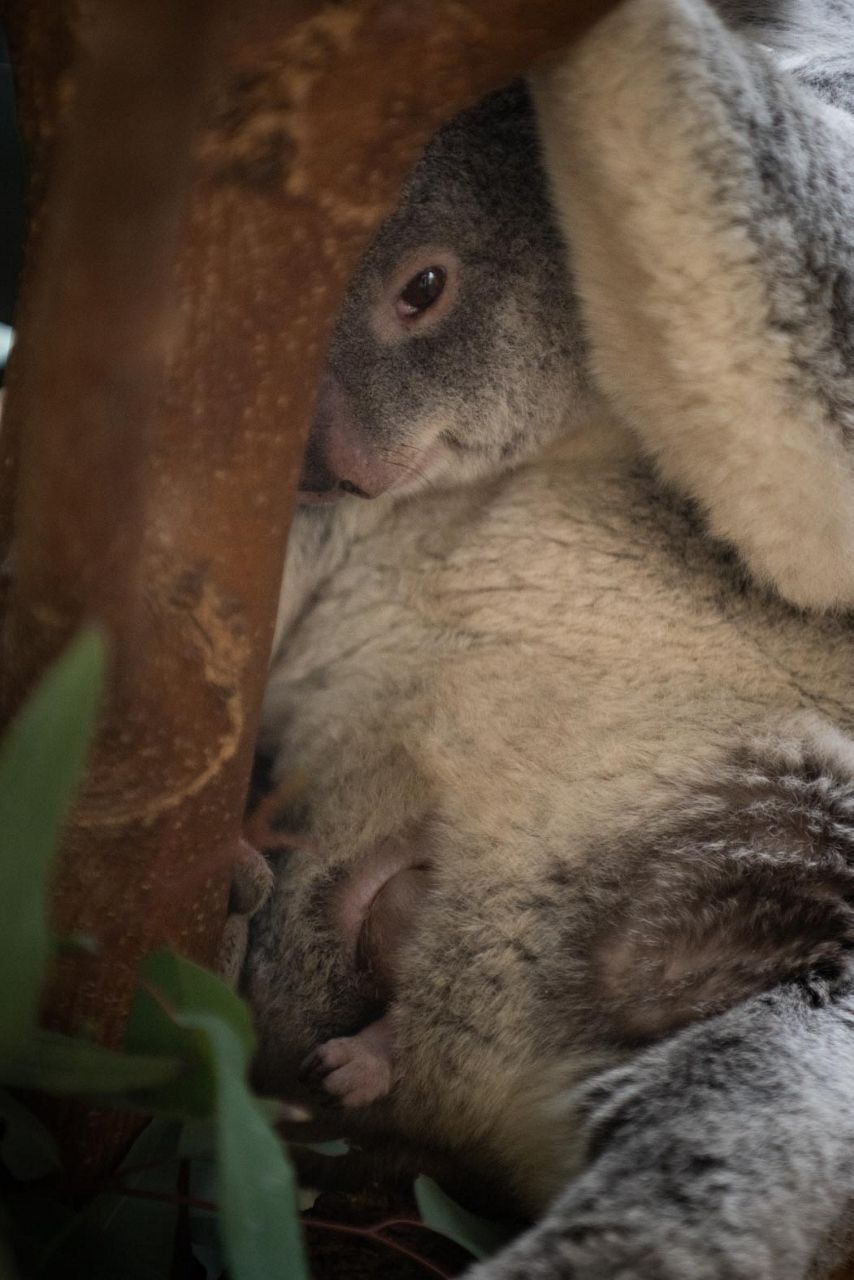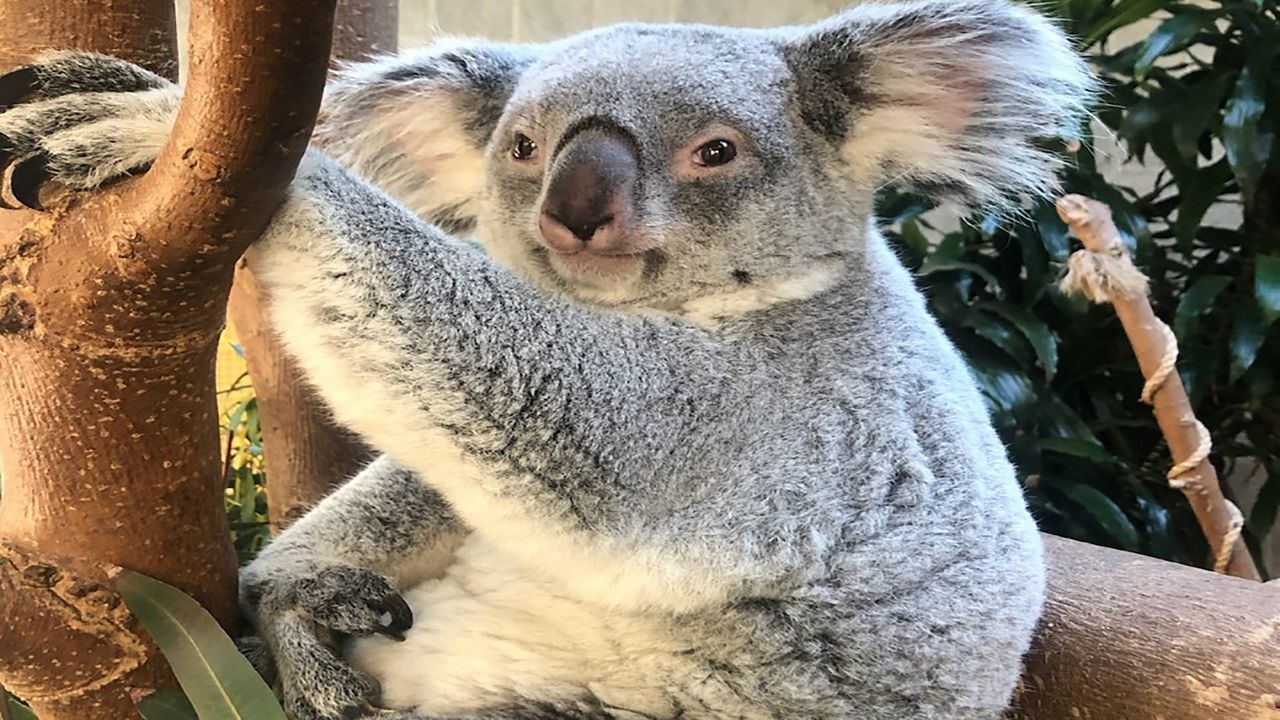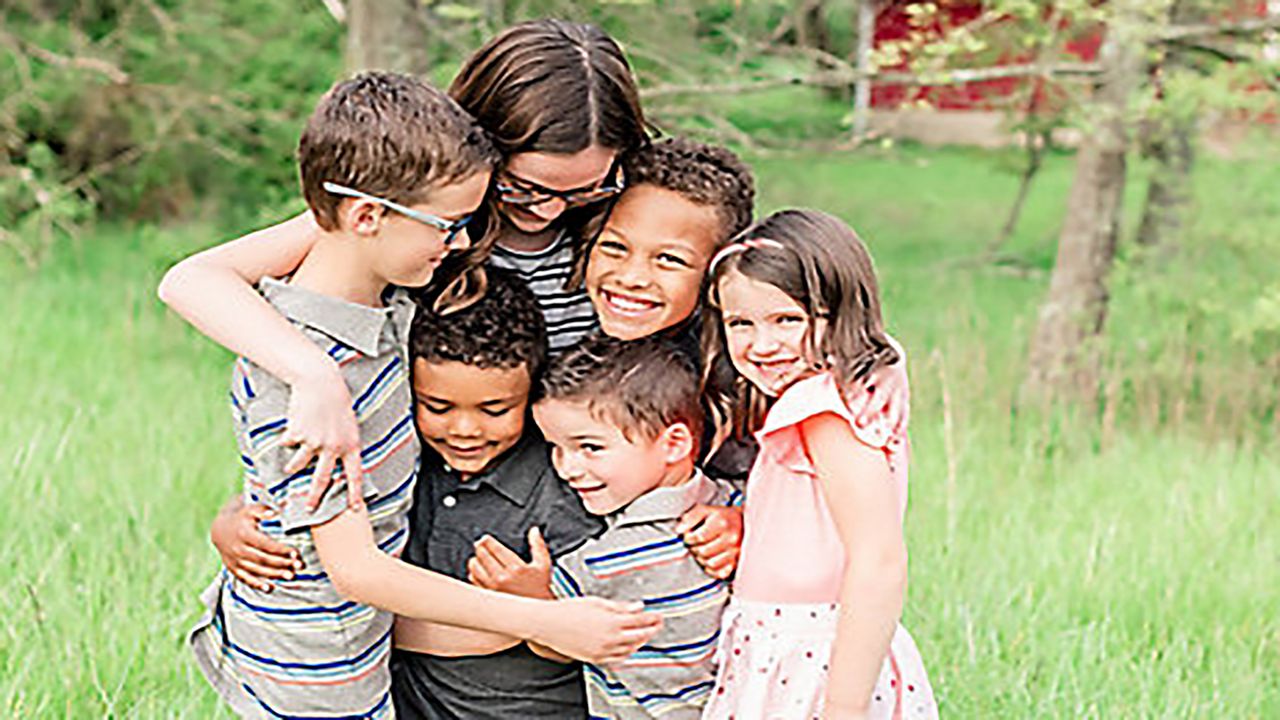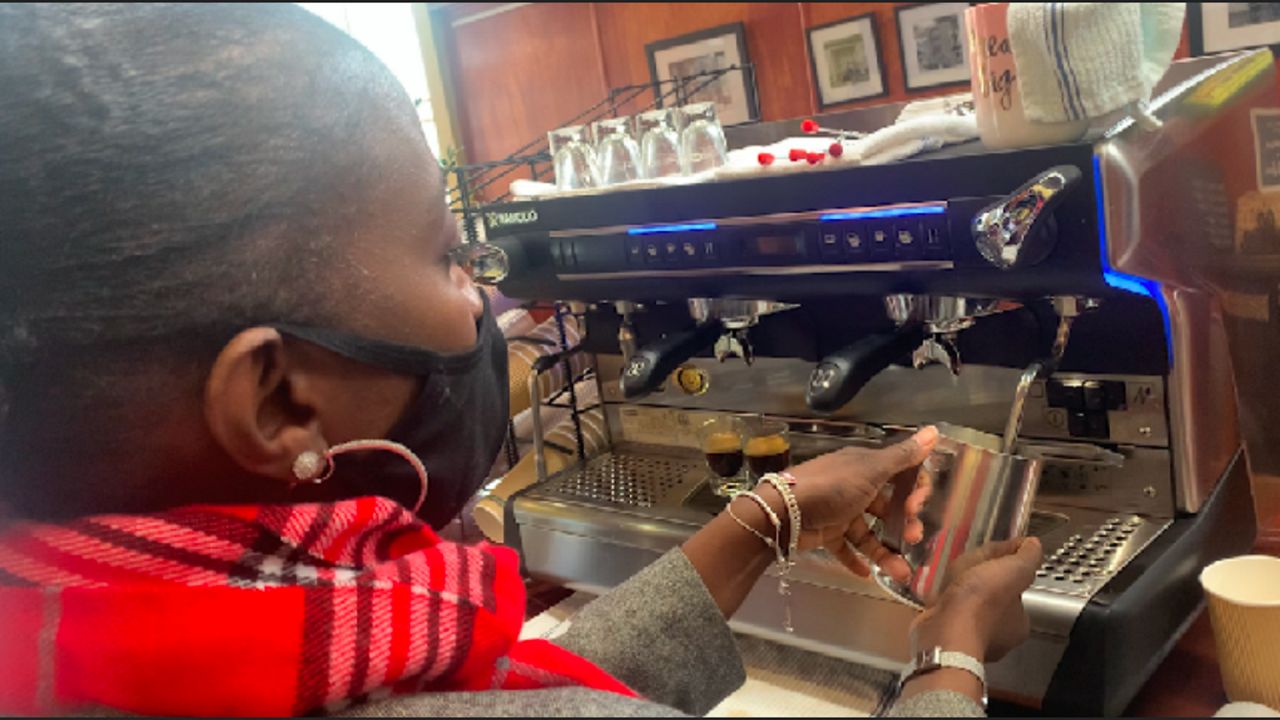COLUMBUS, Ohio — The Columbus Zoo and Aquarium has welcomed its first baby Koala in 15 years — but you won't be able to see the joey entirely yet.
The joey, who was born in July, has been busy growing inside the pouch of his mom, Katy, in the Australia and the Islands region of the park. Zoo officials spotted the joey moving around in the pouch this week, and they said if you're lucky, you could spot their arm or leg reaching out.
🐨 New Year & New Addition: The Columbus Zoo’s Australia and the Islands region has a surprise awaiting guests. Katy the koala’s “baby bump” is now occasionally moving as her little joey, born on July 5, 2020, is developing inside her pouch! Read more: https://t.co/gA7nLp5NDD pic.twitter.com/VokzjVhsPY
— Columbus Zoo (@ColumbusZoo) January 5, 2021
"Koalas are marsupials, which give birth to tiny, underdeveloped young that are the size of a jellybean. Unlike other mammals that develop in their mothers’ wombs, marsupial babies have to make their way from the birth canal to their mothers’ pouch. The good news is that Katy’s joey has already achieved this major milestone," the Columbus Zoo wrote in a statement.
Zoo officials said the joey will continue to grow inside the pouch for a while. The baby is currently the size of a softball and has recently opened its eyes.
Katy, and the joey's dad, Thoar, were born at the San Diego Zoo in 2015 and arrived at the Columbus Zoo in 2017 through the Species Survival Plan, a program coordinated by the Association of Zoos and Aquariums (AZA). The program helps to protect endangered animals and maintain genetic diversity.
This joey is the first baby koala to be born at the zoo since 2006 and is also the third-successful joey to be born at the zoo since it began housing koalas in the early 90s.

“With only 53 koalas residing in nine AZA-accredited facilities in North America, the birth of this koala joey is an extremely significant achievement. We are thrilled to celebrate the new year with this great news, and we are proud of our continued commitment in working to protect the future of koalas and other species across the globe,” said Columbus Zoo and Aquarium President and CEO Tom Stalf.
Koalas, natives of southeastern and eastern Australia, are currently listed as "vulnerable" as their populations dwindle worldwide, according to the International Union for Conservation of Nature’s Red List of Threatened Species. The population decrease is attributed to ongoing drought, disease and destruct in Eastern Australia. The raging bush fires that popped up from 2019 through 2020 are also a factor.
Last year, the Columbus Zoo donated $10,000 to the Zoos Victoria’s Bushfire Emergency Wildlife Fund. The money went toward aiding animals who were injured from the bushfires. The zoo also raised an additional $27,400 that went toward recovery, rescue and rehabilitation efforts by the Zoos Victoria and the Australia Zoo.
Lydia Taylor - Senior Digital Producer
Lydia Taylor is an award-winning Senior Digital Producer for Spectrum News 1 Ohio. She studied multimedia journalism at Kent State University. Before joining Spectrum News, Lydia was the Morning Edition Producer at WKSU, an NPR affiliate.







